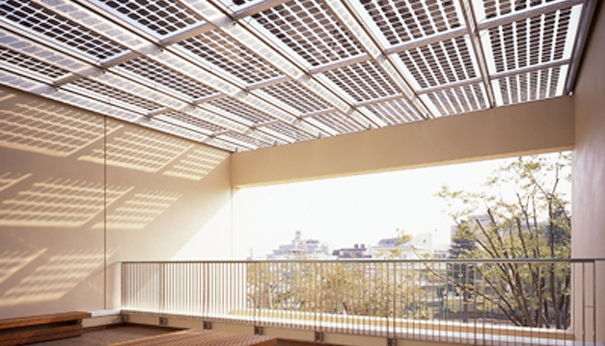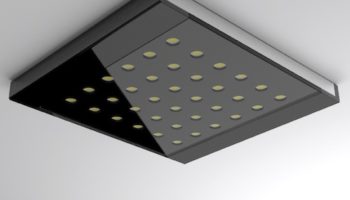Power-Generating Glass: Windows of the Future
It seems to be full of contradictions: a seemingly dematerialized surface that generates power and stores light. Rainbow Solar Inc. (RSi) has produced the transparent, photovoltaic-glass window which generates 80-250 watts of electricity. Although this is not the first “solar window” (see Suntech See Thru and NanaPower Window Technology) it appears that RSi has taken a big step forward.
PV-Glass Windows. Manufactured by Rainbow Solar Inc.
In a distraught economy with rising energy prices, saving money seems to be on everyone's mind. The potential of this product is exciting and hopeful. In a hot-house test, the proven energy savings of the product were greater than 50%, according to a study conducted by the NTUST (National Taiwan University of Science and Technology), under the directorship of Professor C.H. Young (Ph.D.). So groundbreaking, this study received attention from the Discovery Channel.

An enclosed super-tempered glass window system, with a fully-integrated multi-tier PV and heat insulation technology (patent pending); it is being called the next-generation of BIPV (building integrated photovoltaic) and the "Window of the Future." According to the company's press release, "The RSi PV-Glass Window uses the sunlight, and heat from the sun, to generate electricity, reducing heat, and providing a semi-transparent window that provides privacy, while maintaining a comfortable level of visibility to the outside world. At the same time, RSi PV-Glass Windows provide a 100% reduction in Ultraviolet and Infrared radiation, adding that extra level of protection not offered by standard glass windows." The inclusion of this new window technology requires little in the way of changes by architects, developers, and builders, making it an ideal BIPV product.
The windows can currently be manufactured up to 9' x 9' in size and are rated anywhere between 80-250 watts each, depending on size. This new window will be available with a variety of options to meet design, weather, climate and building code requirements. They can include a privacy curtain, which converts the entire window into a light panel, thus blocking out the already shaded window.
Given the reduction in sunlight emitted due to the window’s semi-transparent nature, this particular technology would most applicable to large expanses of glazing. Some have expressed skepticism with the product’s claim of transparency, among other things. With that said, if you would prefer to leave the solar technology on your roof (at least for the time being,) check out the Solar Roofing System: an aesthetically pleasing and easy to install BIPV roof system.




Leave a Reply